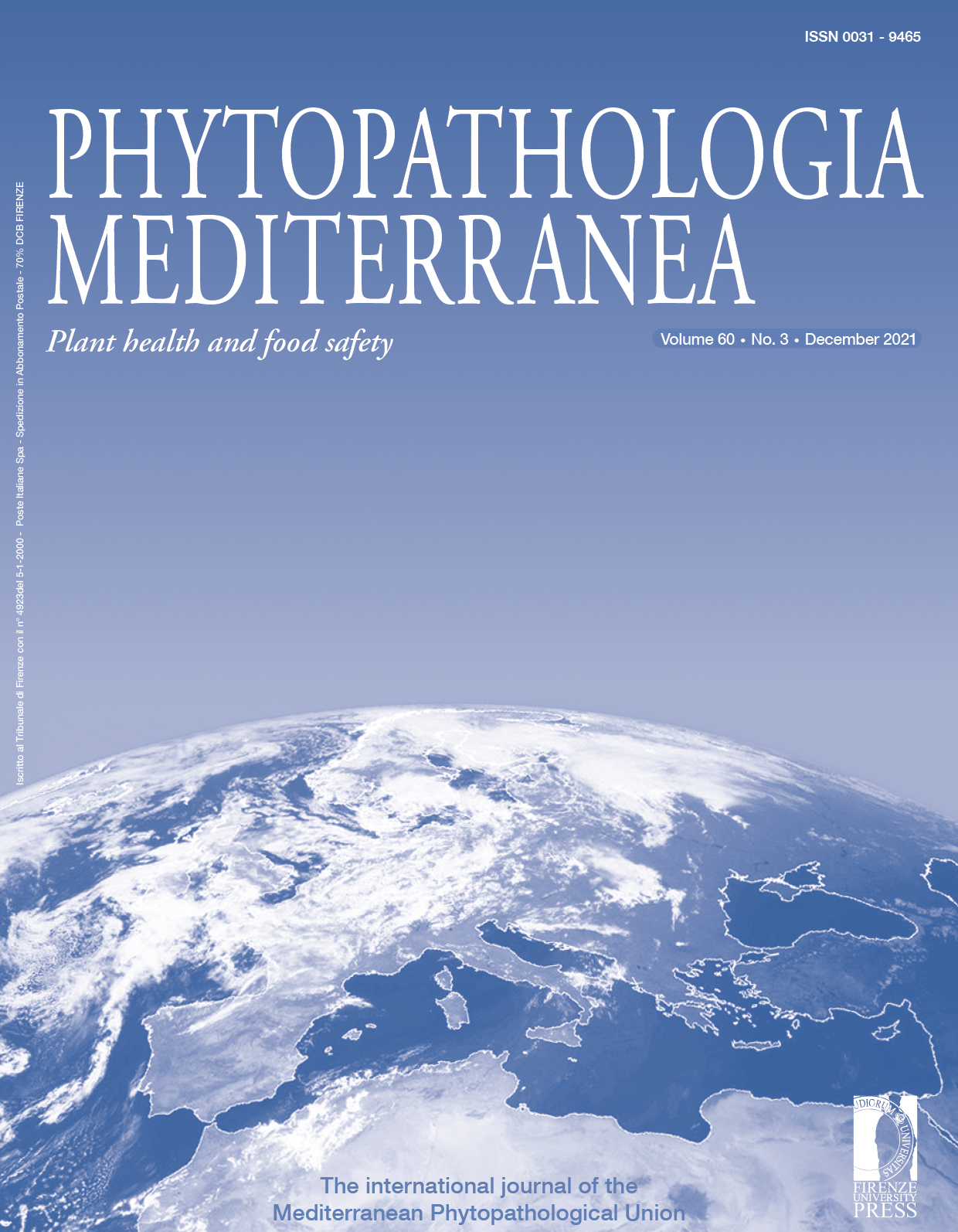Published 2021-11-15
Keywords
- Potyvirus,
- Hungary,
- daffodil
How to Cite
Abstract
In autumn 2017, autumn daffodil plants with yellow-green stripes on the leaves were observed at a botanical garden in Budapest, Hungary. Indicator plants were inoculated, but symptoms did not develop. RT-PCR tests of the indicator plants were also negative for the viruses. Potyvirus specific ACP-ELISA and RT-PCR were carried out on the symptomatic S. lutea leaf samples. RT-PCR with universal potyvirus primers resulted in one, approx. 1700 base pair PCR product. Phylogenetic analysis of the nucleotide sequence of the coat protein demonstrated 98.78-99.51% identity with three Japanese isolates of Narcissus late season yellows virus. While unidentified potyvirus infection of autumn daffodil has been previously reported, sequence data have not been published. Therefore, this is the first report of Sternbergia lutea as a host of Narcissus late season yellows virus.
Downloads
References
Bryan J.E., 2005. Timber Press pocket guide to bulbs. Portland, Or, Timber Press, 227 pp.
Felsenstein J., 1981. Evolutionary trees from DNA sequences: A maximum likelihood approach. Journal of Molecular Evolution 17: 368–376. DOI: 10.1007/BF01734359.
Felsenstein J., 1985. Confidence limits on phylogenies: an approach using the bootstrap. Evolution 39: 783–791. DOI: 10.1111/j.1558-5646.1985.tb00420.x.
Hasegawa M., Kishino H., Yano T., 1985. Dating of the human-ape splitting by a molecular clock of mitochondrial DNA. Journal of Molecular Evolution 22: 160–174. DOI: 10.1007/BF02101694.
Jordan R., Hammond J., 1991. Comparison and differentiation of potyvirus isolates and identification of strain-, virus-, subgroup-specific and potyvirus group-common epitopes using monoclonal antibodies. Journal of General Virology 72: 25–36. DOI: 10.1099/0022-1317-72-1-25.
Kumar S., Stecher G., Li M., Knyaz C., Tamura K., 2018. MEGA X: Molecular Evolutionary Genetics Analysis across computing platforms. Molecular Biology and Evolution (F.U. Battistuzzi, ed.) 35: 1547–1549. DOI: 10.1093/molbev/msy096.
Larkin M.A., Blackshields G., Brown N.P., Chenna R., McGettigan P.A., … Higgins D.G., 2007. ClustalW and ClustalX version 2.0. Bioinformatics 23: 2947–2948. DOI: 10.1093/bioinformatics/btm404.
Mowat W.P., Duncan G.H., Dawson S., 1988. Narcissus late season yellows potyvirus - symptoms, properties and serological detection. Annals of Applied Biology 113: 531–544. DOI: 10.1111/j.1744-7348.1988.tb03330.x.
Pleše N., 1993. A presumable potyvirus infection of Sternbergia lutea (L.) Ker-G. (Amaryllidaceae). Acta Botanica Croatica 52: 5–7.
Salamon P., Palkovics L., 2005. Occurrence of Colombian datura virus in Brugmansia hybrids, Physalis peruviana L. and Solanum muricatum Ait. in Hungary. Acta Virologica 49: 117–122.
White J.L., Kaper J.M., 1989. A simple method for detection of viral satellite RNAs in small plant tissue samples. Journal of Virological Methods 23: 83–93. DOI: 10.1016/0166-0934(89)90122-5.







